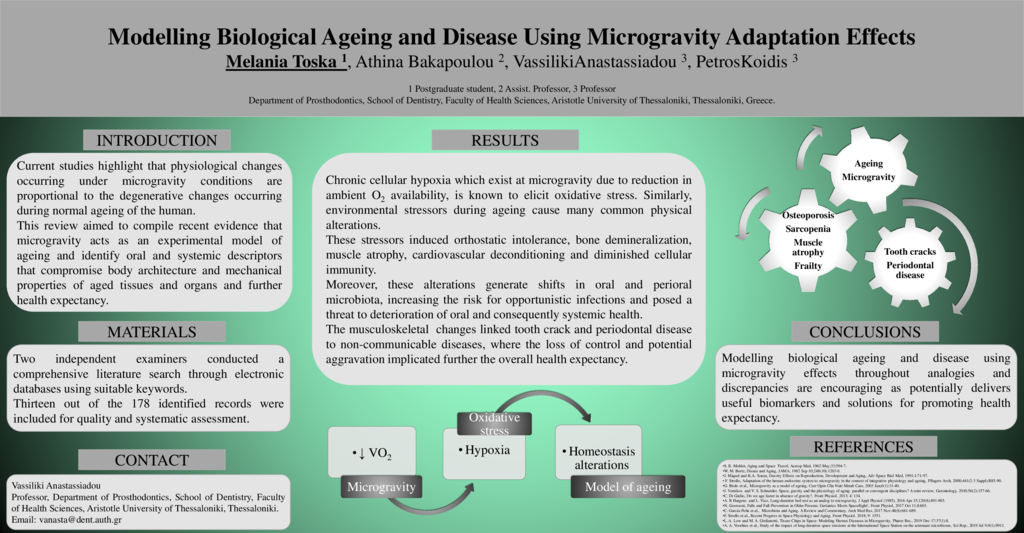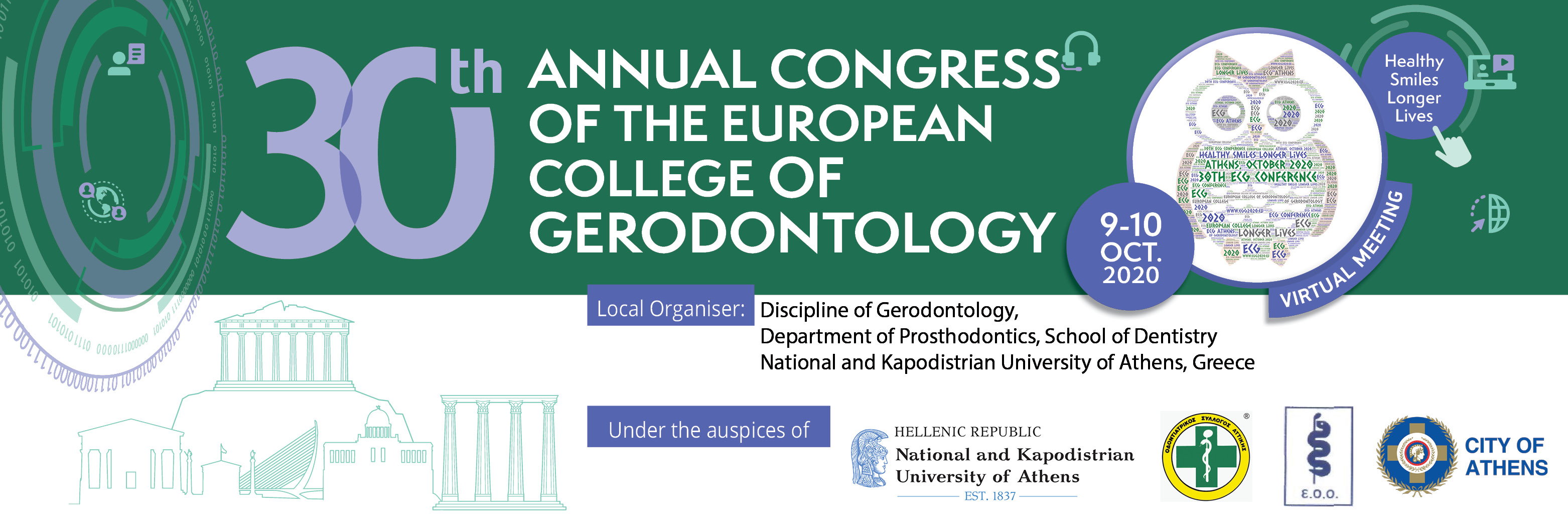Background and aim: Current studies highlight a close resemblance to the morphological changes observed in biological ageing with adaptation effects of microgravity. Consequently, microgravity conditions potentially contribute to highlighting biological indicators and countermeasures that occur during ageing. Such insight provides the links and pathways of alterations and adaptation of the human body to preserve not only mobility but also the performance of daily tasks and consequently prevent disturbances and functional impairments prevailing oral and systemic health status. This review aimed to compile current evidence that microgravity acts as a model of ageing and identify oral and systemic descriptors that compromise body architecture and biomechanical properties of aged tissues and organs affecting health expectancy. Materials: Two independent examiners conducted a comprehensive literature search through electronic databases using suitable keywords.Via a predefined review process, they identified eligible, published in English articles. Thirteen out of the 178 identified records were included for quality and systematic assessment. Results: Ageing and microgravity effects shared environmental stressors, which lead to critical implications in injury and disease. These stressors induced shifts in oral and perioral microbiota, increasing the risk for opportunistic infections and posed a threat to deterioration of oral and consequently systemic health. As oral signs occurred early and remained relatively stable contributed to understanding mechanisms, such as immune response to senescence and dysfunction, musculoskeletal deconditioning, kidney and cardiac dysfunction, lung and gut inflammation and actions preventing further implications in health status. Moreover, recorded fluid homeostasis alterations, orthostatic intolerance, cardiovascular and neuro-sensory deconditioning were (a) considered negative metabolic and morphologic consequences compounded by pre-existing sarcopenia, and (b) mitigated through exercise regimes and diet to prevent further sarcopenic and osteoporotic disturbances. Skeletal muscle and bone loss linked tooth cracks and periodontal disease to non-communicable diseases, where the loss of control and potential aggravation implicated further the state of nutrition, mobility, quality of life and overall health. Conclusions: Modelling biological ageing and disease using microgravity effects throughout analogies and discrepancies are promising delivers of useful biomarkers and solutions for promoting health expectancy.
- 31 views



